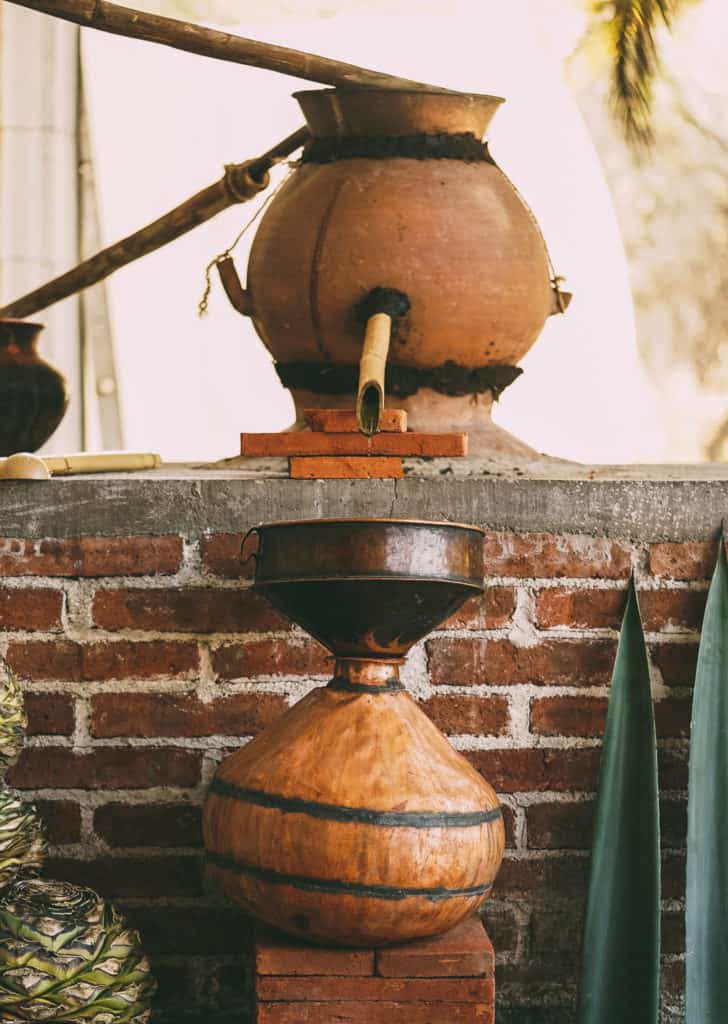
An ensamble, or ensemble, is a mezcal made from different types of agave that are roasted, crushed, fermented, and distilled together. For example, a popular ensamble in Oaxaca is a mix of cuishe and espadín that are tumbled into the oven together. But the posssibilities are endless and, of course, intriuging.
Making a classic ensemble requires a considerable degree of experience due to the difference in size and consistency between types of agave. Throughout mezcal history, ensambles have been more common than single agave mezcal–at least in regions with a diversity of types of agave. The plants were typically harvested when ripe–regardless of what species. (The idea of a single agave mezcal became more prominent in the late 20th century, likely due to the popularity of “single varietal” wines and liquors.)
So what’s the difference between an ensamble and a mezcla? The term ensamble traditionally refers to mezcal that is distilled from two or more types of agave, as opposed to a mezcla, which is a mezcal that is blended after distilling. True ensamble mezcals are generlaly considered superior to mezclas, or “cold blends.” However, there is no legal definition of these terms and makers are free to call any mezcal that contains different agaves by either name or something else. Here’s a deeper dive on the difference between ensamble mezcals and mezclas.













Leave a Comment